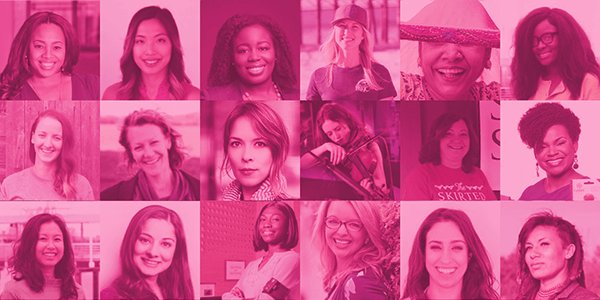What You Should Know about Crowdfunding on Kickstarter
December 16th 2020
With so many questions being asked in the WomensNet Facebook group recently about Kickstarter, we turned to Katheryn Thayer, director of brand content at Kickstarter, for the inside scoop on what types of projects and businesses are most successful at crowdfunding. Here’s what she shared with us:
WomensNet: Could you give us a little history of crowdsourcing and Kickstarter?
Kickstarter: Kickstarter did not invent crowdfunding, but it gained its eponym by popularizing it. The company launched in 2009, at the tail end of the Great Recession, and that scrappy spirit has definitely been evident through 2020’s hardships. The Inside Voices call for projects helped creators generate new streams of income from quarantine, and Lights On encouraged creative businesses to use Kickstarter campaigns to stay open.
WomensNet: What types of companies usually use Kickstarter as a funding source?
Kickstarter: Kickstarter is exclusively for creative work (which includes creative businesses). The site rules require creators to offer something new—whether that’s a book, performance, class, food, installation, or something else—as a reward. Kickstarter campaigns allow creators to collect money for an idea they do not yet have the funds to produce at scale, so it can be a great tool for early and seed-stage businesses. It’s important to note that Kickstarter does not allow campaigns to offer equity.
WomensNet: Are there particular industries or types of products and services that tend to do well on the platform?
Kickstarter: Almost any creative project or business can find its fit on Kickstarter (provided it follows the rules). The official Kickstarter categories are Arts, Comics & Illustration, Design & Tech, Film, Food & Craft, Games, Music, and Publishing. But there are also several less apparent subcommunities around offerings like fashion, tarot, bike gear, and more.
WomensNet: Are there price points that tend to have more success?
Kickstarter: Most projects aim to offer at least one reward that costs between $20 and $50, and these more accessible prices tend to be popular with backers.
WomensNet: Is there an average amount raised that we could share?
Kickstarter: Every project is different. Small campaigns like those launched as part of Make 100 might aim to raise $1,000 or less. Creative businesses with a large following, like Brandon Sanderson’s self-publishing business, can raise millions.
WomensNet: Could you share a case study of a microbusiness that was successful in securing the funding they needed?
Kickstarter: I’m not sure how you define microbusiness, but this case study about a small design studio might be a good example.
WomensNet: What are some do’s and don’ts you might share to help our women business owners improve their odds of success on Kickstarter?
Kickstarter: There’s tons of great advice in our Creator Handbook—we recommend everyone who launches a project reads it. A few takeaways we repeat frequently:
- Create a list of potential backers and start collecting emails before you launch. (Our prelaunch pages can help with that.)
- Use clear, compelling lifestyle photography to help backers imagine themselves using your reward.
- Give yourself a cushion. Creators sometimes forget to factor shipping costs, production complications, and our 5% fee into their budgets.
- Creators can set a financial goal of any amount, and give themselves between 0 and 60 days to meet that goal. Though every project is different, we generally see that 30 day campaigns are the best way to motivate your community’s support without burning out.
- Send updates! Once you successfully meet your goal, regular communication with your backers is key.
WomensNet: Anything else they should know?
Kickstarter: Many creators launch a failed campaign before they find success! Failing is sometimes part of the process. And Kickstarter is a great way to learn what your audience is or is not responding to before you invest money in creating something.



















